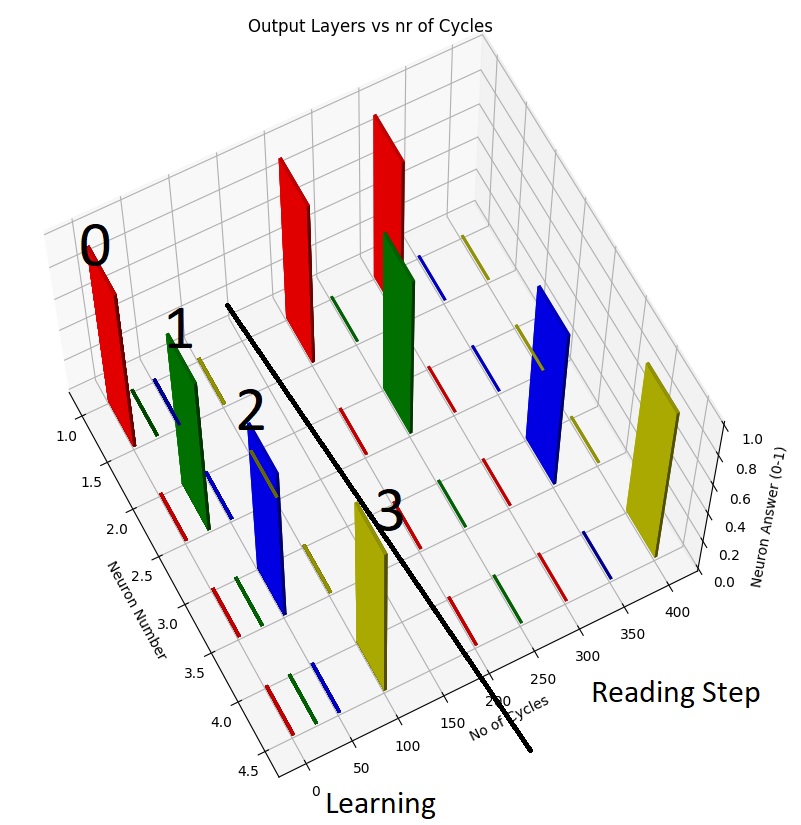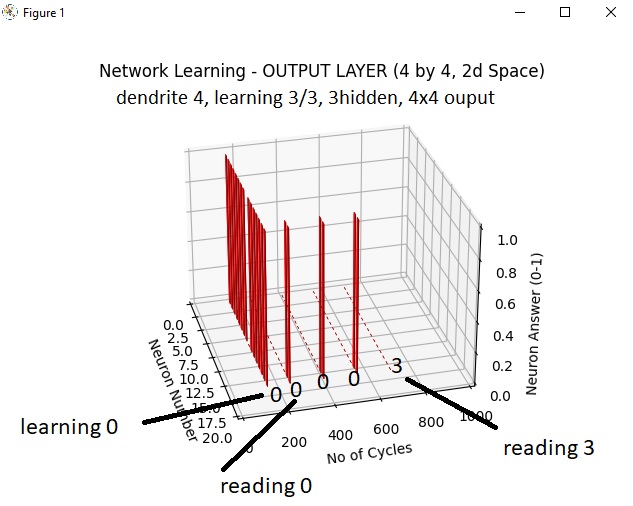I’ve spent most of my time reading about inhibitory neurons. I can’t say I found the holy grail. Too much data to sift through, so still searching. However, I tried also to do some theoretical simulations, went through about 20 models but nothing seemed to make sense. I also created a smaller version of my AI coding with just 3 neurons, two of them excitatory and one inhibitory. They obviously (only in hindsight obvious) can’t do inhibition in all cycles, they do inhibition only in 50% of the cycles, moreover, if I allow excitatory neurons to bind among themselves in a circular fashion (A binds to B and B binds to A) then in some cases they will will keep exciting each other in the absence of an outside input. A is active and will activate B and then B is active and will activate A. In hindsight, also obvious :-)..
But what are the roles an inhibitory neuron can play ?
- they should adjust the frequency of firing. Here I have to say that I don’t understand why people are still considering firing rates as being meaningful., Firing rates dependent of the intensity of the stimulus, if I shout louder there is an increase in firing rate but I can’t understand things faster. So information at some point has to be slowed down to integrate with the rest of the information. For example if I say a word in which some of the letter are louder then I would lose the meaning of the word because some sounds will arrive and be process faster than the rest of the word. But maybe I’m missing something.
- they should provide feedback from other area, but feedback can come also from regular neurons.
- in my model I need them to extinguish excitation propagating through all the network, stopping the circular activation from A to B but I can’t find a reasonable way of doing this.
- They should also act as a secondary mechanism in data analysis, the first mechanism being the normal neurons. To be more precise, they should be able to prevent the same pattern being learned by more than one neuron, at least this is one of my working hypothesis. How to do this has remained elusive so far… Another way to do this, through topological means, is still in the cards, but I have made not progress on this front either.
- Another function could be, to force dendrites to make more synapses, at least in some cases, where the inhibitory neuron binds to dendrites and not to the neuron body.
In summary I have no working hypothesis on what the inhibitory neurons do.
A bit of a good news is that I found this course online from MIT, through their MIT OpenCourseWare: Sensory Systems, held by professor Peter H. Schiller. That’s an excellent course, lots of information, well structured and well presented. Many thanks to MIT for allowing free access to such great resources.



